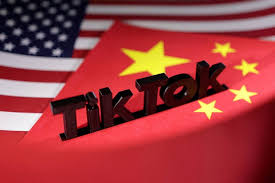Now that pay TV is on its final legs, Netflix is vying for a piece of the projected $153 billion worldwide advertising market.
The business and some analysts saw their new, less expensive ad-supported service, which was described in a positive quarterly report on Tuesday, as a chance to increase revenue while clients cut spending amid the economic downturn. As TV’s viewership declines, it loses appeal to advertisers and becomes a prime target for disruption by Netflix.
Reed Hastings, co-CEO of Netflix, claimed the realization struck him after hearing recently how traditional TV was “marching toward a precipice” by former Disney CEO Bob Iger.
In a video interview on Netflix’s third-quarter results and outlook, Hastings stated, “What I underappreciated was just the impact on advertising.” Following an estimate that it would gain 4.5 million customers in the fourth quarter, the company’s shares increased by 14%.
Simply put, they are able to reach fewer people, and the 18-to-49 demographic is falling faster than pay TV. Therefore, the demise of linear TV as an advertising medium is what is actually igniting the cycle.
In November, Netflix intends to roll out an ad-supported version of its service in the US and 11 other nations. It will cost $6.99 a month in the US, which is 30% less than its entry-level ad-free tier. It will have five minutes of commercials per hour.
In the future, Netflix, which is currently available in more than 190 countries, hopes to offer “tailored” advertising, similar to how it suggests unique viewing recommendations.
The new business will eventually turn a profit, but Chief Financial Officer Spencer Neumann warned that “it’s going to be fairly tiny out of the gates.”
According to some Wall Street analysts, the Netflix service’s ad-supported version may persuade some price-conscious current members to convert to the less expensive option.
That might be advantageous during a period of economic uncertainty.
According to Fred Boxa, associate director of consulting company Arthur D. Little, “the strategy adjustment may cannibalize its existing market, particularly at the $9.99 tier, but it’s a wonderful move in this inflationary environment when households continue to justify their streaming choices.”
According to Haris Anwar, a senior analyst with Investing.com, if Netflix can pull it off, revenue from the ad-supported version of the service and from an upcoming charge to users for sharing their accounts, may very well make up for any shortfall from a lower-priced streaming tier.
According to PP Foresight analyst Paolo Pescatore, TV networks and broadcasters who depend on advertising as a key source of revenue may suffer significantly as a result of Netflix’s embrace of advertising.
For such players, this can be the deciding factor, according to Pescatore.


















